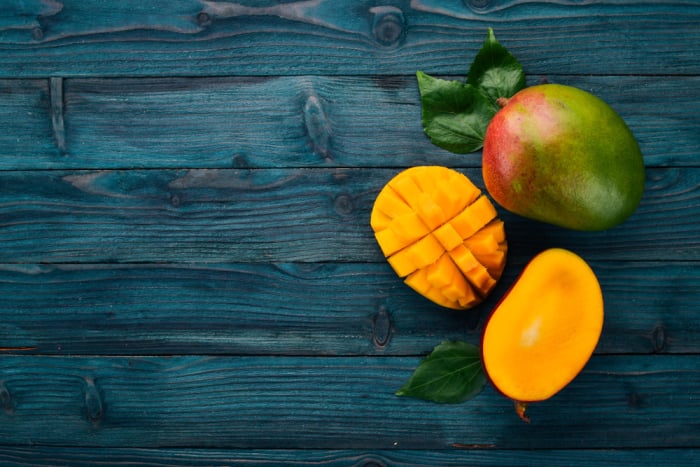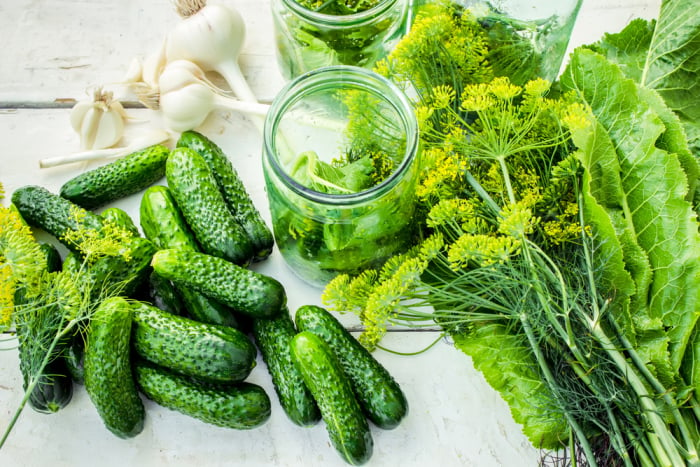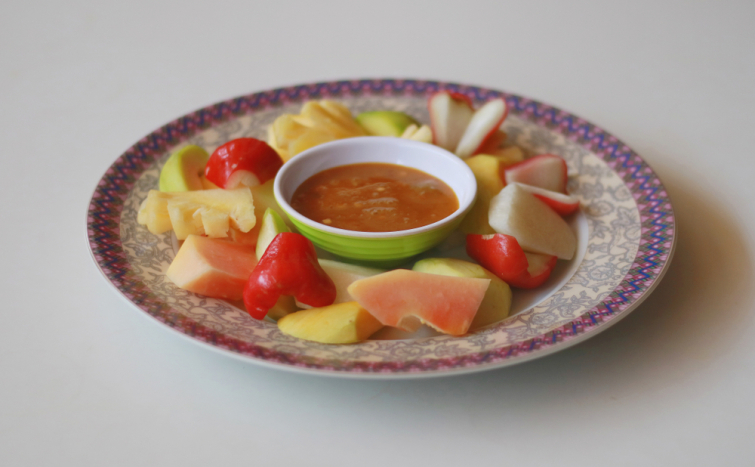Various Nutrients of Rujak which are a shame to miss

Who doesn’t know rujak? This traditional Indonesian food is loved from young children to adults. In addition to its delicious taste and provides a sensation of freshness, the combination of various types of fruit and vegetables accompanied by spicy peanut sauce is often thought to contain nutrients and vitamins in it so it is good for health. Come on, let’s find out the answer.
Vitamins and Nutrition in Rujak
Usually, rujak consists of various kinds of fruits and vegetables, such as mango, pineapple, cucumber, kedondong, guava, and bengkoang. However, one serving of rujak for the size of 200 g with peanut sauce has,
243 calories
12.3 grams of fat
24.07 grams of carbohydrates
11.98 grams of protein
The nutritional content of the salad comes from the fruits in the salad. Well, let’s see what fruits are in salad and contain vitamins in them.
Vitamins and Fruit Nutrients in Rujak
1. Mango

The fruit that grows in the tropics is very often found in rujak. The sour and sweet taste that arises offers a sensation of freshness during the dry season. One mango usually contains 100 calories with vitamin A, vitamin C, folate, vitamin B, and vitamin K and potassium. You already know that the nutritional and vitamin content in rujak is very much if there is mango and it is good for our health.
2. Pineapple
Apart from mango, pineapple is also often used as fruit in salad. One pineapple has 82 calories and contains vitamin C, vitamin A, calcium and iron. In addition, pineapple also has the enzyme bromelain which is good for digestion and accelerates the breakdown of food in the body. Now the vitamins and nutrients in pineapple can be a measure of whether the salad is nutritious or not.
3. Cucumber

One thing that should not be absent from salad is cucumber. One cucumber usually has 45 calories and 11 grams of carbohydrates. Some of the vitamins contained in it also support the benefits of cucumber as a bowel movement, such as vitamin C, vitamin K, potassium, and magnesium.
4. Jicama

This fruit, which tastes sweeter and fresher than potatoes, has low calories. In addition, its high vitamin C content makes jicama a fruit with antioxidants that are good for the body. The content of vitamins and other nutrients in jicama is calcium, potassium, fiber, and protein which can also be obtained from this fruit.
The fruits above are the ones we often encounter in salad. You also know that fruits are a great source of vitamins and nutrients. However, the consumption of rujak is usually accompanied by a spicy peanut sauce. Let’s see, the content of vitamins and nutrients in a loyal friend when eating this salad.
Vitamins and Nutrients Content in Peanut Sauce

Peanut sauce is usually found as a spice in salad, satay, or grilled chicken. Have you ever thought that, for example, a combination of fruits and vegetables with peanut sauce in salad can change the content of vitamins and nutrients contained in fruits and vegetables?
One cup of peanut sauce usually has about 700 calories, 55 grams of fat, and 35 grams of carbohydrates. When viewed from its nutritional content, peanut sauce is included in ‘pretty good’. However, excessive consumption of peanut sauce is also not good for the body. In addition, if the main food is such as chicken or meat, it will add more calories so that it does not become balanced.
The content of vitamins and nutrients in peanut sauce when mixed with fruits and vegetables will likely not change the benefits of what is already there. Therefore, rujak is good for consumption as long as it is in a portion that matches the calorie needs of each person.
Hello Health Group does not provide medical advice, diagnosis or treatment.